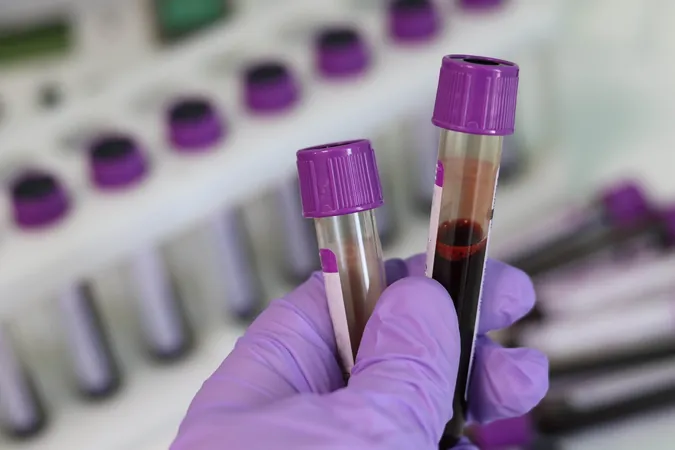
Revolutionary Biomarker HNL Dimer Could Transform Sepsis Treatment Monitoring!
2024-11-08
Author: Siti
Introduction
In a groundbreaking development in the fight against sepsis, researchers have confirmed that the biomarker Human Neutrophil Lipocalin (HNL) Dimer is an effective tool for monitoring the response to antibiotic treatment. Initially identified as a key indicator of bacterial infections, HNL's dimeric form may now offer quicker assessments of treatment efficacy, according to a significant study published in the renowned journal PLOS ONE.
The Impact of Sepsis
Historically, sepsis has been labeled the most expensive disease burden on healthcare systems worldwide, causing a staggering number of deaths when not treated promptly. With bacterial infections serving as the predominant cause of sepsis, rapid and effective antibiotic therapy is critical to saving lives. However, the reliance on broad-spectrum antibiotics poses substantial risks, primarily contributing to the alarming rise of antibiotic resistance.
Antibiotic Resistance Crisis
The urgency of addressing antibiotic resistance cannot be overstated; the World Economic Forum identified it as one of the greatest global health threats. In 2019 alone, antimicrobial resistance was linked to 1.27 million deaths, with a staggering 13.66 million cases of sepsis being reported as direct or indirect causes of mortality.
Study Overview
The recent study evaluated the effectiveness of HNL Dimer in a clinical setting, focusing on 277 patients admitted to intensive care units. Blood samples were collected at the time of admission and on the following three days to assess how well HNL Dimer could predict successful antibiotic treatment compared to other established blood markers such as Procalcitonin, Heparin-Binding Protein, and CRP (C-Reactive Protein). These biomarkers, while informative, typically show a delayed response, often taking 4 to 5 days to reflect treatment progress.
Expert Insights
Dr. Per Venge, a leading researcher from the University of Uppsala in Sweden, highlighted the stark advantages of employing HNL Dimer. "The levels of HNL Dimer can decrease significantly, often within a day of successful antibiotic treatment," he explained. "This means we could potentially save 3 to 4 critical days in assessing treatment outcomes."
Future Implications
This collaboration between Uppsala University and Diagnostics Development is poised to revolutionize how clinicians monitor sepsis patients, allowing for timely interventions and potentially improving survival rates. As healthcare professionals seek innovative solutions to combat the rising tide of sepsis and antibiotic resistance, the implementation of HNL Dimer testing could mark a significant turning point in medical practice.
Conclusion
Stay tuned as the healthcare community closely monitors these developments, with the hope that faster diagnostics will facilitate better patient outcomes in the ongoing battle against sepsis!



 Brasil (PT)
Brasil (PT)
 Canada (EN)
Canada (EN)
 Chile (ES)
Chile (ES)
 España (ES)
España (ES)
 France (FR)
France (FR)
 Hong Kong (EN)
Hong Kong (EN)
 Italia (IT)
Italia (IT)
 日本 (JA)
日本 (JA)
 Magyarország (HU)
Magyarország (HU)
 Norge (NO)
Norge (NO)
 Polska (PL)
Polska (PL)
 Schweiz (DE)
Schweiz (DE)
 Singapore (EN)
Singapore (EN)
 Sverige (SV)
Sverige (SV)
 Suomi (FI)
Suomi (FI)
 Türkiye (TR)
Türkiye (TR)